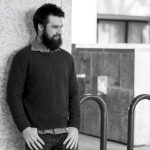
The removal of ego
The problem, especially when it comes to disability, media, and innovation, is that everyone thinks they know how to solve it, including those who need to listen most
The views expressed in this column are those of the author and do not necessarily reflect the views of the Reynolds Journalism Institute or the University of Missouri.
The history of innovation is steeped in the egos of powerful people. I’m not just talking about the Elon Musks or Steve Jobs of the world, but also those in marginalized communities who tend to hog the mic. In his book Ego is the Enemy, former ad exec turned writer and stoic philosopher Ryan Holiday opines that “We can seek to rationalize the worst behavior by pointing to outliers but no one is truly successful because they are delusional, self absorbed, or disconnected.”
The problem, especially when it comes to disability, media, and innovation, is that everyone thinks they know how to solve it, including those who need to listen most. There’s a lot of talking, a lot of posturing and not a lot of—to spin off the author Steven Pressfield — putting the industry’s ass where its heart wants to be. It turns out, if we want media to be inclusive of disabled voices, we have to do more than have newsroom meetings and wonder why disabled readers feel alienated.
This column is my last for the RJI — unless they are kind enough to ask me to return in the future — and so this final edition is about the takeaways I want to leave you with.
You never stop being a better advocate for disabled workers
Ego shows up in many ways in activist spaces, from non-disabled people assuming what we want to disabled activists demanding that they and only they know what we want. The same is true for disabled media workers. We don’t all want staff jobs, we don’t all want to do investigations, we don’t want to spend our lives being punched in the gut by the injustices facing our communities. I have to say that the wants and needs of a disabled radio or TV journalist are often radically different from those working in print and/or digital.
I am incredibly suspicious of disabled activists who believe there is one way to access newsrooms and I’m here to remind you that those doing this work are constantly learning (and feeling some measure of guilt that they didn’t know these things before).
Here’s a list of things I learned or was reminded of within disability reporting recently within the last month:
- I need to think more about my answer to the inevitable question of “So, why did you take on this story?” prior to an interview rather than blurting something earnest but jumbled when a source asks.
- I need to think of the replacement of my phone as less of a business expense and more of an access need for both me and my sources. I’ve been limping along, but now I have sources struggling to hear me sometimes if I get a bad phone line.
- I need to search my inbox for PR releases and check in emails rather than trying to reinvent the wheel twice a week. In other words, I need a system for this task.
- I need to ask more sources about why disability isn’t part of their lexicon when it comes to access and equity initiatives.
Here are three things I’m committing to in the next two months to help improve my reporting as a disabled journalist in order to be better at solutions-oriented work:
- Writing a plain language/easy read guide to an interview with me that includes what to expect, what your rights are in media space, and how the process will go and , writing an access statement on my website that points to how I operate as a solopreneur.
- Restarting my newsletter in a form that is accessible to me — it turns out that starting an outlet is not within my energy budget right now but a regular newsletter should be.
- Doing a better job of marketing my pay what you can consulting sessions for freelancers, newsrooms, and those curious about how to build their businesses while also incorporating disability cultural principles.
Reach out to those whose work you read on disability to thank them
If being a freelancer has taught me anything when it comes to audience building it’s that your impact can’t be measured in clicks. When a source says, “Thank you for asking that, no one else has” or, “I searched up your work and I’m glad you wrote that” it means more than how many retweets a piece gets. Most of the disabled journalists I know, especially those working on beats that aren’t specifically about their lived experiences, rarely get messages from the public, let alone their peers.
Which, I happen to think, is a crying shame. This is my bias, but I think that one of the best ways we can improve working conditions and develop innovation is by reaching out to student journalists. Instead of not crediting their work, we can reach out and say, “Hey, great work on that!” That’s all it takes.
Here are three actions I’m committing to when it comes to communicating with my peers in the next two months:
- Emailing at least one reporter on a disability-related piece that I found valuable (whether that reporter is disabled or not) a week.
- Creating a spreadsheet (I’ll be using Notion for this) of all of the disability-related pieces that I found valuable for the rest of the year to be shared, more than likely, in my newsletter.
- Developing a page on my website where links to these stories can live.
Use disability related knowledge to build a better working environment for yourself first
Remember the phrase “The best time to start X was years ago, the second best time is now?” Well, for a long time I sacrificed my own working environment, my own mental clarity and systems, for the benefit of others. I’ve had control over most of my schedule for almost a decade at this point, through jobs in three different industries, but only in the last eight to ten months have I figured out a better balance.
Now, the first impulse of most creatives I know is to reach for the tools, the apps, the gadgets, the new and fancy software. I would caution you to go a different route. My job before this foray into freelancing was in disability-led art. One of the main modalities used by that organization, Listen to Dis’ Community Arts if you’re interested in looking at more of their work, is somatics.
Which leads me to this suggestion: find something related to your body/brain that helps support routine. For me, it’s a somatic body scan, where I assess how my (to borrow a phrase from disabled writer and artist Ace Tilton Ratcliff) meatcage is doing. This isn’t me telling you to go to the gym — or, god forbid, me suggesting yoga can magically fix you — just to give serious thought to how your body responds to stimulus that isn’t sitting in your desk chair or leaning on your standing desk. You can be kind to your body without trying to cure it.
And, since I dislike violating the rule of threes (blame my MFA), here are three actions I’m taking to improve my personal working environment:
- Because I want to rebuild my personal library, university textbooks and mismatched things that caught my fancy can only take me so far, I’m committing to ordering two books per month. First in audiobook and then, if they make the cut, in physical form.
- Budget and purchase a new desk that will last for more than just a few years.
- Update the laptop I haven’t turned on in a year because I think my ability to not work outside my office is safe and that I can now move to working outside or in other parts of my home office than behind my desk.
A parting note
It feels beautifully hypocritical to start this column talking about ego and then ending it with a barrage of links. I’ll stick to one, I can be found at Jloeppky.com. Other than that, I hope that this column has been as informative to you as it has been for me to write. My hope is that I can build from this momentum into a book project surrounding disability and productivity. Wish me luck!

Comments